| A new cluster of four to 13-seat Single Engine Turboprops flying in commercial operations IFR - on the AOCs of established operators - will open doors to small runways, under-used GA airports and deliver operating costs lower than their peers.
They could spawn a cluster of mini commuter airlines from Ireland, the Channel Isles, Isle of
Man, potentially and be a catalyst to a host of opportunities that haven’t been considered
before. Moreover, they would be an incubator for future business jet owners and users,
delegates at the recent SETOps conference, organised by
Emerald Media and
BlueSky
News at London Oxford Airport heard.
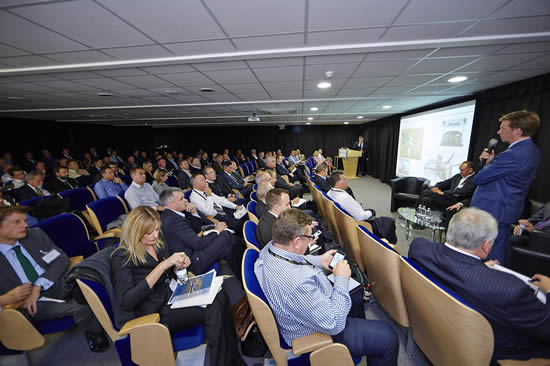 |
|
A
capacity audience attended
SETOps 2016 at London Oxford
Airport in October | Photography:
Paul Cordwell. |
This sector is far from new, said conference chairman
James
Dillon-Godfray. In the US Planesense and Surf Air have achieved considerable success flying their multi Pilatus PC-12 fleets (they feature in the top 10 of business aviation operators in the US). Existing EASA AOC operator/co-ownership models Voldirect (France), Hendell Aviation (Finland) and JetFly (where members can buy as little as a 16th share of the aircraft for private charter) are making a difference already. And next year Surf Air is bringing the PC-12 to the UK (alongside light jet operations with Embraer Phenom 300s).
How
big is the market?
According to data presented by WINGX Managing Director
Richard Koe SETops accounted for 238,810 departures in Europe last year, up 38% on the previous year. “Their sweet spot is in sector journeys under 1.5 hours and they are connecting 45% more airport pairs than scheduled airlines,” he noted. France is the market leader in Europe with a 25% share accounting for 25,229 departures in 2016. The UK is second ranked at 16,410, for a 16% share, while Norway is third with 12,820 movements (16%.) Lead airports are Paris’ Le Bourget, Geneva and Nice and in the UK Denham, Fairoaks and Biggin Hill, followed by Bournemouth and Jersey.
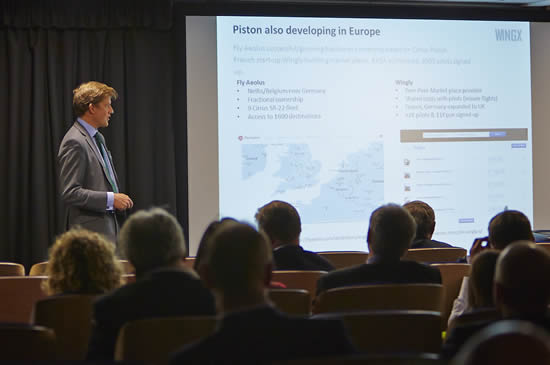 |
|
Richard
Koe, Managing Director of WINGX
Advance | Photography:
Paul Cordwell. |
Now they are poised to make an even great contribution, because come January 2017, EASA and the UK CAA are poised to formally approve the PC-12, Daher TBM 900 and Grand Caravan for IFR public charter.
However, from what experts in the room shared it doesn’t look as if it is going to be easier to get these aircraft onto AOCs compared with the introduction of a Beechcraft King Air. Rather, the associated paperwork coming on to operators’ certificates could be notably greater.
Pilot
training
Another challenge is in pilot training and experience needed (a recommended 1,000 hours, although flying experience on a King Air will help). All training needs to be done in real time, owing to a lack of simulators, says
Jonathan
Shooter, MD of Oyster Air, one of only three people in the UK with the required commercial experience to train flight crew.
The retention of suitably qualified and trained crew for SET commercial operations will be challenging too, considering that pilots will always want to move up the ladder to fly bigger, faster aircraft. Chairman of Hendell Aviation,
Matti
Auterinen, who shared an operations perspective of what was needed to introduce such operations in Europe, based on his company’s experience, countered that in Australia there is a certain ‘cachet’ to fly the PC-12 with the Flying Doctors. “Qantas pilots want to do that,” he said.
There will be more challenges on flight planning too, where routings need to assess the 15 minutes-glide-to-a-safe-landing-place requirement in the event of a loss of power. Equipment levels will need to be higher than that which most of the already operational aircraft normally have. Retrospectively, fitting older models with the equipment required is not likely to be practical, so the ‘new’ market will be dominated by new aircraft.
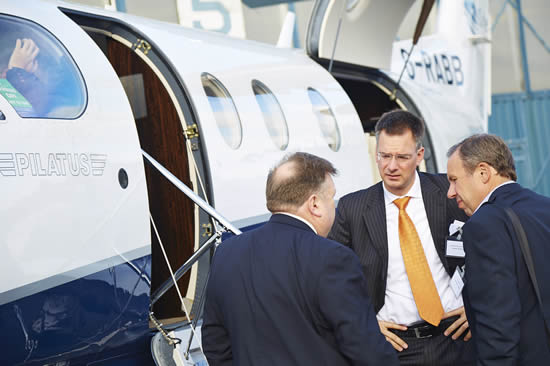 |
|
Edwin
Brenninkmeyer, CEO of Oriens
Aviation, with his company's
Pilatus PC-12 NG | Photo:
Paul Cordwell. |
OEMs
The mainstay Pratt & Whitney Canada PT6 engine, with up to 2,000shp power and with the potential for further growth, has clocked up 335 million flying hours since entering service in the 1960s. However, the OEMs still have to accumulate sufficient airframe-engine combination (pairing) hours before the authorities will be comfortable with mandating their use for commercial SET operations. And while the core of the new GE engine being used for Textron’s new Cessna Denali has been around for a while, delegates heard that airframe and engine will have to be proven for a considerable time and accumulate many hours of operation before it can join the established PC-12, TBMs and Caravan family as another option for commercial operations in Europe, at least.
Kenny
Dichter, speaking at NBAA last week suggested that once the Denali is launched it will overtake the other marques inside a few years
- but he didn’t think the type was right for Wheels Up.
Airport
infrastructure
Another challenge is building the infrastructure at the smaller airports that these aircraft need. Few have the IFR capabilities, navaids or lighting and the required CAT 3 fire capability. While in Europe, Germany and France in particular, there has been an aggressive programme of introducing LPV GPS-based approaches to some of the general aviation airports, in the UK this has been very slow, with a backlog of airports waiting to have such approaches implemented, as Leeds East Airport highlighted. And this could take up to a couple of years.
This SETops model (do we need a new name?, pondered co chairman
Dave
Edwards, Director of Synergy Aviation – to get over the singe engine perception) is not going to bring about a revolution, delegates heard. Rather it will evolve just like the VLJ market has done. We must be careful not to over hype the potential, said Richard Koe.
Both BBGA and EBAA are working hard to get the value of business aviation recognised and SETops could play a big part in this delivering people where they truly want to go – not a hub airport miles away from their destination, at a fraction of the price. This is the objective of FlyPlymouth which is crowd-funding to purchase Plymouth Airport from Sutton Harbour Holdings (closed since 2011) and re-open it, initially as an important GA airport with a complementary mini FBO. It has been very encouraged with the support it has received to date, said Chief Exective
Raoul
Witherall.
However, cautioned Gloucestershire Airport Operations Director
Darren Lewington, there isn’t much money in GA flying. It has had to rely on non aviation activities for income (one of their hangars was used in the TV series drama Victoria). Yet Gloucester (Staverton) is one of the luckier ones. It has seen its movements increase from 74,000 to 77,000 movements this year, including scheduled services by Let 410 from CityWing to the Isle of Man, Belfast and Jersey and has received a government grant to open up the southern part of the airport and is and is building a new hangar to house up to Global Express sized aircraft.
European Regional Airline Association Director General
Simon
McNamara acknowledged there is definitively a gap in the market – under sub 50 seats. Turboprops are enjoying a revival and for the first time we have more turboprops than jets in our member airline fleets. He is another who can see potential, a kin to the early 80s when King Airs were flying scheduled routes (Gatwick to Morlaix) with the likes of Brit Air.
Acknowledging that SETops US operators and EASA European operators have performed extremely well, good maintenance and high standards will be paramount, said EBAA President
Brian
Humphries. Our view is that business aviation should offer freedom to choice whether it is a Gulfstream G650,
Phenom 300 or PC-12, so we embrace this new entry model.
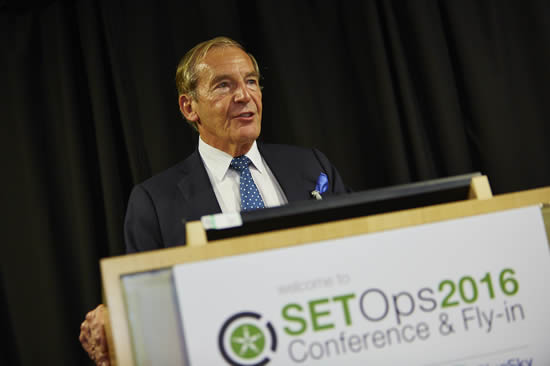 |
|
EBAA
President Brian Humphries | Photography:
Paul Cordwell. |
The UK is also positive about the potential, noted
Marc Bailey CEO of the BBGA. He told delegates he was aware of six companies in the UK alone looking to start operations with these aircraft. (Surf Air has already selected TAG to start operations early next year Its operating base has not been chosen yet but it is eyeing London Oxford and Biggin Hill.
Importantly, the established operators insisted they had not experienced any problems on the ‘single engine’ issue. European flyers are going to be more influenced by the price. A brand new shiny aircraft with a smart interior is going to appeal, added Simon
Macnamara.
David
Macdonald, Director of Oxygen Aviation commented: “How we promote SetOps and
how users hear about it will be important. If there is a charter solution available with a PC-12,
people will want to know that. Why would someone want to take a SetOps over a Mustang?
The competitive price, larger cabin, and short runway capability. So that they can reach an
airport they couldn’t reach before. To maximize the benefits to the users the aviation community
will need to educate themselves on which airports this new category of commercial aircraft can
utilise.”
Finance
The buying time in this sector is very short added
Adam
Twidell, CEO of PrvateFly with customers often taking the decision to fly on the day they request the charter. The age of the aircraft too, for UK and Europe, is also very important.
The finance panel agreed. These aircraft especially the Pilatus PC-12 and TBM enjoys a high RSV. The fact that these aircraft are going to be on an operator’s AOC makes them far riskier – so here the traditional business model is changing. We anticipate private individuals will buy them explore a manager operator and put them on AOC. This will make it much easier said
Air Law Firm partner
Aoife
O’Sullivan. We see the different models being used for specific purposes suggested
Brendan Lodge at Jetbrokers, the TBM being more a leisure, “boy’s toy” and the PC-12 appealing more for corporates. This panel agreed they will stimulate the market for sure. This is a new entry level, a nursery for business aviation, said Close Brothers Managing Director
Richard
Kearsey.
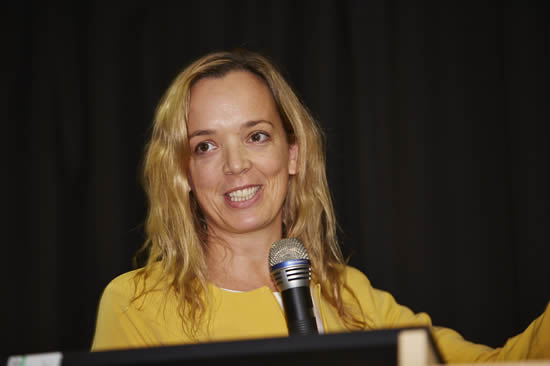 |
|
Aoife
O’Sullivan, Partner at the Air
Law Firm |
Photography: Paul Cordwell. |
Social media is going to be pivotal to our success in getting our brand awareness known agreed
David Lawlor,
Head of Projects & Corporate Finance at
Global Ideas/G1 Aviation, which is preparing to introduce the PC-12 on its AOC later this year with services built around the primary Middle East cities of Abu Dhabi and Dubai. (Business aviation flyers under the age of 40 use their smart phones and tablets so digital marketing will be all important). The business is courting corporates, business and government charter customers bringing an interesting affordable business model in the region.
Blink Managing Director
Cameron Ogden highlighted that the Mustang worked because of its price point - price is key at the lower end of the market and partnering with the airlines is also clever to get the brand awareness up.
The
US experience
Wheels Up has enjoyed success in the US with the twin-engined King Air 350i running under the AOC of Gama Charters which now supplies the flight crew and maintenance provision for 72 aircraft operating in the US, centre around the King Air 350i.
Founding Partner John Colucci recently moved to London to explore the opportunity of Wheels Up coming to the UK and starting western European operations. “We will make that decision in the next month or so and this could be as early as second to third quarter of 2107. Inside three years the business, which includes Wheels Down members’ lifestyle programme, has grown to 3,500 members and only members can fly on the fleet. One of our original hurdles was the turboprop model but we have proven it works and now have a solid membership base with near 90% retention rate. Wheels Up uses a proprietary app where members can check their flights and search for empty legs (called hot flights), which are on offer from US$295. The cost per year is US$17,500 year one; US$8,500 in year two plus US$3,950 per occupied hour. 50% of our clients didn’t belong to any aviation club before.
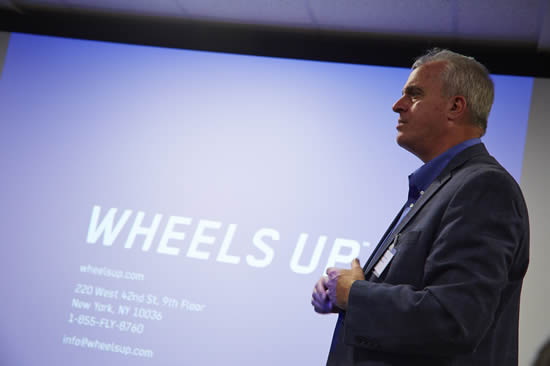 |
|
John Colucci recently moved to London to explore the opportunity of Wheels Up coming to the UK and starting western European
operations | Photography:
Paul Cordwell. |
The conference highlighted the potential to open up a whole new chapter right down to piston aircraft “realistic air taxi Ubers”, as being offered by Antwerp based Fly Aeolus a frax ownership model based on Cirrus Piston SR-22s capable of reaching 1,600 destinations and France’s Wingley. All they need is the infrastructure and qualified pilots.
The finance panel, led by Aoife O’Sullivan, Parner at the
Air Law Firm noted that placing an aircraft onto an AOC can save the VAT applicable both on importation into Europe and on aviation services used by the aircraft - that alone will be a massive saving.
While the main focus of the conference was on commercial air taxi-type roles for the PC-12 and the TBM, there was little talk on the real nice aircraft, the Cessna Caravan - and the latest version the Grand Caravan. Widely used outside of Europe in commuter roles between hard to get to places via ground transportation and throughout Europe there ought to be some unique, niche city pairings or island hops perhaps, for which a 200mph Caravan run with up to 13 passengers is something that nobody until now has given consideration to, as it simply hasn’t been an option, suggested London Oxford Airport’s James Dillon Godfray. (The aircraft is being used in Scotland on floats or Loch Lomond
Seaplanes).
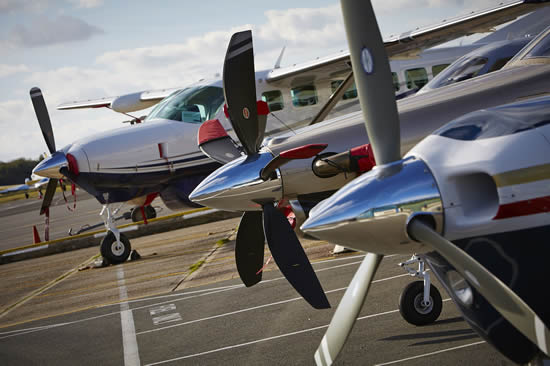 |
|
A
number of delegates flew-in to
SETOps 2016, creating an
excellent static aircraft
display |
|
Photography:
Paul Cordwell. |
Speakers'
presentations, together with photographs of the
event, are now online at: www.setops.co.uk
|

